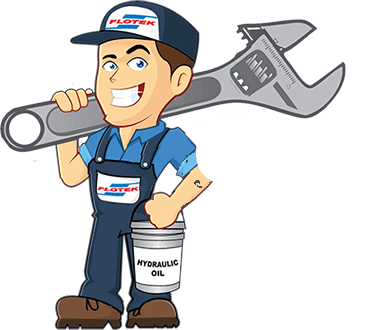The 8 Causes of Hydraulic Hose Failure?

Hydraulic hoses are a crucial yet often overlooked component in hydraulic systems. They act as the system’s arteries, directing hydraulic fluid to where it’s needed. However, if not properly maintained, they can pose serious risks, including severe injuries and catastrophic machine failures. To ensure both the safety of your people, and the health of your machinery, it's essential to understand the common causes of hydraulic hose failure and how to prevent them. Read the top 8 reasons for hose failure:
1. Tube Erosion
Cause: Tube erosion occurs when the inner surface of the hose degrades, usually due to high-velocity fluid or contamination by particles. High fluid velocity can result from using hoses with too small a diameter or from sharp bends in the hose. Contaminants in the fluid act like abrasive sandpaper, gradually wearing down the hose’s inner surface.
Prevention: Regularly change hydraulic fluid filters and monitor contamination levels, to prevent particle-induced erosion. Ensure hoses are the correct size, because size does matter…. AND avoid sharp bends to reduce high-velocity fluid effects.
2. Heat Hardening
Cause: Overheating causes hoses to become stiff and brittle. The elastomer material in the hose breaks down under high temperatures, leading to hardening and cracking.
Prevention: Use hoses with the correct heat ratings for your application. Install heat shields, or guards to protect hoses from excessive ambient heat, and consider a heat exchanger if fluid temperatures are high.
3. Abrasion
Cause: Abrasion happens when hoses come into contact with other surfaces, such as moving parts or sharp edges, or even through subtle vibrations. Over time, this wear exposes the reinforcement layers of the hose.
Prevention: Route hoses carefully to minimize contact with abrasive surfaces. Use reinforcing hose guards in high-wear areas to protect the hose cover.
4. Excessive Pressure
Cause: Hoses that fail cleanly without signs of external damage are likely experiencing pressure beyond their design limits.
Prevention: Ensure the working pressure of the hydraulic system does not exceed the hose’s maximum pressure rating. Replace hoses with those rated for higher pressures if necessary.
5. Incompatible Hydraulic Fluid
Cause: Not all hydraulic fluids are compatible with all hose types. The wrong fluids can cause the hose’s inner tube to deteriorate, swell, or delaminate, often without visible signs.
Prevention: Always check the compatibility of hydraulic fluids with your hoses before use. Ensure that the fluid is compatible with all components, including the inner tube, outer cover, fittings, and o-rings.
6. Exceeding Minimum Bend Radius
Cause: Bending hoses beyond their minimum bend radius can cause buckling, kinks, or blockages, leading to overpressure and potential failure.
Prevention: Verify hose length and routing to avoid tight bends. Adhere to the minimum bend radius specifications provided by the hose manufacturer.
7. Improper Assembly
Cause: Incorrect assembly, such as poorly seated or crimped fittings, can lead to leaks or blown hoses under high pressure. Contamination from abrasive debris left in the hose during cutting and assembly, can also cause failures.
Prevention: Ensure fittings are properly seated and crimped. Clean and flush hoses thoroughly before assembly to remove debris, and clamp the hose ends after crimping.
8. Exceeding Maximum Service Life
Cause: Hydraulic hoses are subjected to intense pressures and wear over time, leading to stretching, fatigue, and eventual failure.
Prevention: Monitor the age of your hydraulic hoses, OR have Flotek come out to assess, and possibly replace them.
Conclusion
Regular inspection and maintenance of hydraulic hoses is vital for preventing failure. By understanding these common causes, and taking appropriate steps, you can significantly reduce the risk of hose failure. Ensuring the safety of your machines, avoiding Down Time, not to mention big repair bills down the track.




